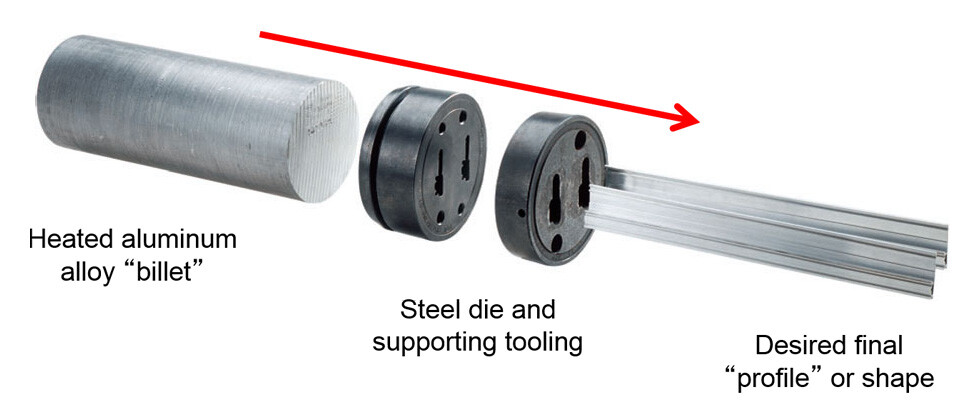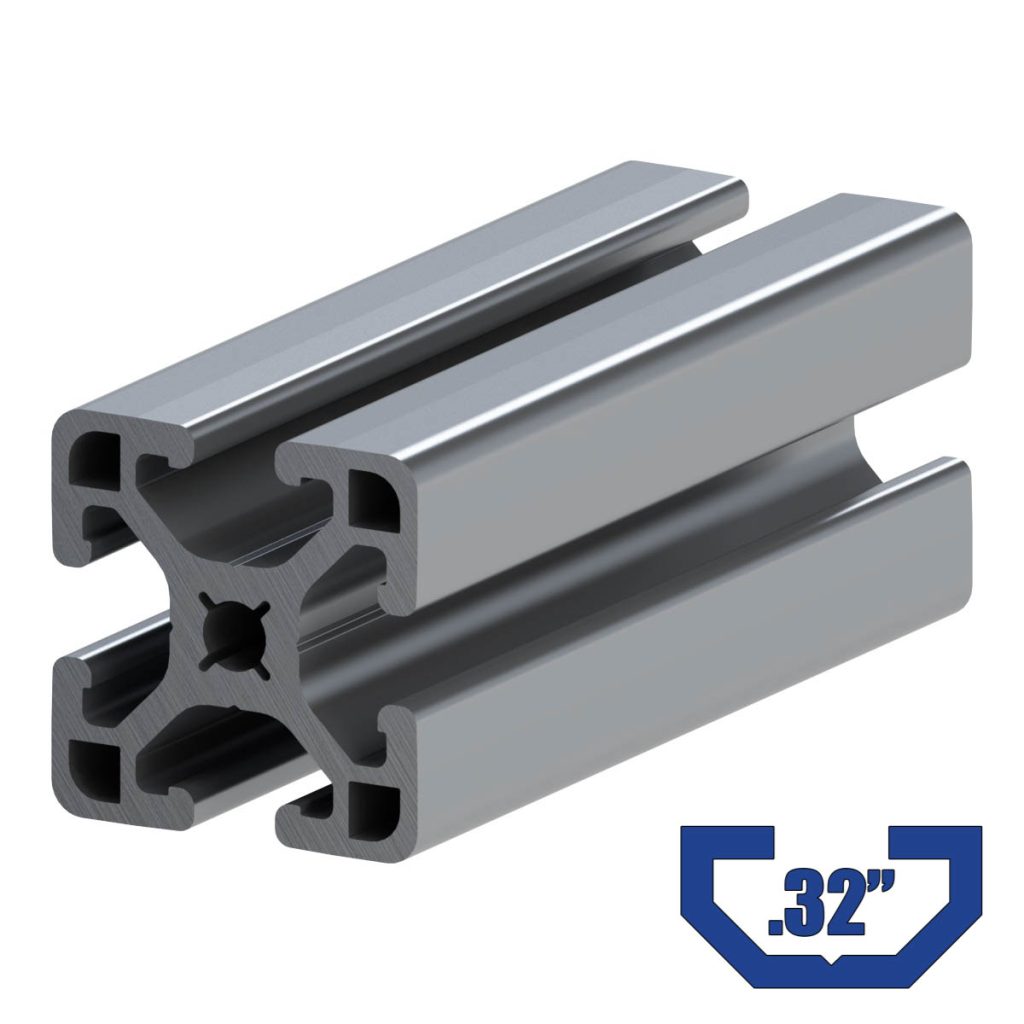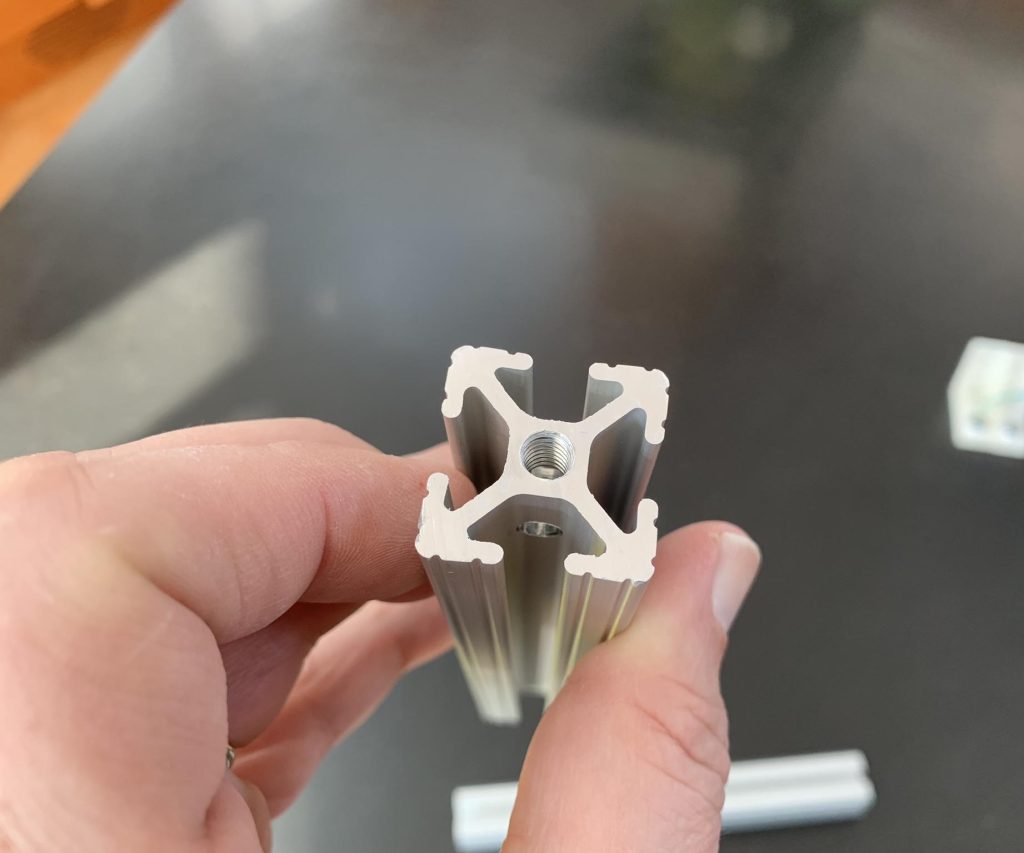Table of Contents
Aluminum extrusion is a popular material in many industries. Whether you’re building a structure or creating a product, cutting aluminum extrusion accurately is a crucial step to ensure the quality of your work. However, working with such a sturdy material can be quite challenging, especially if you’re not familiar with the best practices for cutting it.
In this guide, we’ll explore some of the most effective methods for cutting aluminum extrusion. From using specialized saws to optimizing your cutting techniques, we’ll cover everything you need to know to get the job done right. Whether you’re a seasoned professional or just starting, this guide is packed with valuable insights and practical tips to help you master the art of cutting aluminum extrusion.
To accurately cut aluminum extrusion, you will need a saw with a fine-toothed blade and a miter gauge. Follow these steps:
- Measure and mark the cut line on the extrusion.
- Secure the extrusion to the miter gauge.
- Adjust the saw blade to the correct angle and height.
- Slowly and steadily cut through the extrusion using the saw.
- File or sand down any rough edges.
How to Accurately Cut Aluminum Extrusion?
Aluminum extrusions are widely used in various industries due to their strength, flexibility, and durability. However, cutting aluminum extrusions can be a challenging task, especially if you do not have the right tools and techniques. In this article, we will guide you on how to accurately cut aluminum extrusions to meet your project requirements.
1. Selecting the Right Tools
To accurately cut aluminum extrusions, you need to have the right tools. The basic tools required for cutting aluminum extrusions include a saw, a measuring tape, a marker, and a clamp. You can use a hacksaw, a circular saw, or a miter saw to cut aluminum extrusions, depending on the thickness and width of the extrusion. It is important to select a high-quality saw blade that can handle the rigors of cutting aluminum without getting damaged.
To ensure accuracy, you should use a measuring tape to measure the length of the aluminum extrusion and mark the cutting line with a marker. A clamp can be used to secure the extrusion in place, preventing it from moving during the cutting process.
2. Types of Cuts
Aluminum extrusions can be cut into various shapes and sizes, depending on the project requirements. The most common types of cuts include straight cuts, miter cuts, and compound cuts. Straight cuts are the simplest and most common type of cut, while miter cuts are used to create angles and joints. Compound cuts are used to create complex shapes and angles.
Straight Cuts
To make a straight cut, you should first measure and mark the cutting line on the extrusion. Then, secure the extrusion in place with a clamp and use a saw to make the cut along the marked line. It is important to use a steady and consistent speed while cutting to ensure a straight and clean cut.
Miter Cuts
Miter cuts are used to create angled cuts on the aluminum extrusion. To make a miter cut, you should first determine the angle of the cut and mark the cutting line on the extrusion. Then, secure the extrusion in place with a clamp and use a saw to make the cut along the marked line. It is important to adjust the angle of the saw blade to match the angle of the cut.
Compound Cuts
Compound cuts involve cutting the aluminum extrusion at two different angles simultaneously. To make a compound cut, you should first determine the angles of the cut and mark the cutting lines on the extrusion. Then, secure the extrusion in place with a clamp and use a saw to make the cuts along the marked lines. It is important to adjust the angle of the saw blade to match the angles of the cuts.
3. Cutting Techniques
To ensure accuracy and precision while cutting aluminum extrusions, you should use the following techniques:
Clamping
Clamping the aluminum extrusion in place prevents it from moving during the cutting process, ensuring accurate and clean cuts.
Slow and Steady Cutting
Cutting aluminum extrusions requires a slow and steady cutting speed to prevent damage to the saw blade and to ensure a clean and accurate cut.
Clean and Sharp Saw Blade
Using a clean and sharp saw blade is essential for accurate and precise cuts. A dull blade can cause uneven cuts and damage to the aluminum extrusion.
4. Safety Precautions
Cutting aluminum extrusions can be hazardous if proper safety precautions are not taken. To ensure safety while cutting aluminum extrusions, you should:
Wear Protective Gear
Wear protective gear such as safety glasses, gloves, and earplugs to protect yourself from flying debris and loud noise.
Secure the Extrusion
Secure the aluminum extrusion in place with a clamp to prevent it from moving during the cutting process.
Use the Right Tool
Use the appropriate saw and saw blade for cutting aluminum extrusions to prevent accidents and damage to the extrusion.
Proper Disposal of Waste
Dispose of the waste material properly to prevent accidents and injuries.
5. Benefits of Accurate Cutting
Accurate cutting of aluminum extrusions is essential for ensuring a precise fit and preventing waste. Accurate cuts also ensure that the extrusions fit together perfectly, creating a strong and durable finished product.
6. Cutting Aluminum Extrusions vs. Other Materials
Cutting aluminum extrusions is different from cutting other materials such as wood or plastic. Aluminum extrusions require specialized tools and techniques to ensure accurate and precise cuts. Unlike wood or plastic, aluminum extrusions are stronger and more durable, making them ideal for use in various industries.
7. Conclusion
In conclusion, cutting aluminum extrusions requires the right tools, techniques, and safety precautions. Accurate cutting is essential for creating a precise fit and ensuring a strong and durable finished product. By following the tips and techniques outlined in this article, you can accurately cut aluminum extrusions to meet your project requirements.
Frequently Asked Questions
Aluminum extrusion is a popular material for various projects due to its lightweight and durable properties. However, cutting it accurately can be a challenge. Here are some common questions and answers to help you cut aluminum extrusion with precision.
1. What tools do I need to cut aluminum extrusion?
You will need a few basic tools to cut aluminum extrusion accurately. A miter saw or circular saw with a fine-toothed blade is ideal. You can also use a hacksaw, but it will take longer and may not produce the cleanest cut. Additionally, you will need a measuring tape, a square, and clamps to secure the extrusion in place while cutting.
It is essential to wear safety glasses, gloves, and a dust mask while cutting aluminum extrusion to protect yourself from sharp edges and metal shavings.
2. How do I measure aluminum extrusion accurately?
Measuring aluminum extrusion accurately is crucial to ensure that you have the right length for your project. Use a measuring tape to measure the extrusion’s length from end to end, ensuring that the tape is flush with the edge of the extrusion. You can also use a square to ensure that the extrusion is at a 90-degree angle and mark the cutting line with a pencil.
Remember to account for the width of the saw blade when measuring and cutting the extrusion. It is better to cut the extrusion slightly longer than needed and then trim it down to the correct length with a fine file or sandpaper.
3. How do I secure the aluminum extrusion while cutting?
Securing the aluminum extrusion is crucial to ensure accurate cuts and prevent the material from shifting during the cutting process. Use clamps to hold the extrusion in place on your work surface. Place the clamps as close to the cutting area as possible without interfering with the saw blade.
You can also use a vise to secure the extrusion vertically for cutting at a 90-degree angle. Make sure that the vise jaws are clean to avoid scratching the extrusion’s surface.
4. What is the best way to cut aluminum extrusion without damaging it?
The best way to cut aluminum extrusion without damaging it is to use a saw with a fine-toothed blade. This will produce a clean cut with minimal burrs or rough edges. Apply light pressure while cutting and let the saw blade do the work to avoid bending or warping the extrusion.
If you are using a hacksaw, use a new blade with fine teeth and take your time to ensure a clean cut. It may help to lubricate the blade with a little oil to reduce friction and make cutting easier.
5. How do I deburr the edges of the aluminum extrusion after cutting?
Deburring the edges of the aluminum extrusion after cutting is essential to remove any sharp edges or burrs that may be hazardous or damage other materials. Use a fine file or sandpaper to smooth the edges of the extrusion. Hold the file or sandpaper at a 45-degree angle to the edge and work in a back-and-forth motion until the edge is smooth.
Be careful not to apply too much pressure, as this can cause the extrusion to bend or warp. Wipe away any metal shavings with a clean cloth or vacuum to avoid scratching or damaging the extrusion’s surface.
In conclusion, cutting aluminum extrusion accurately requires patience, precision, and the right tools. While it may seem like a daunting task at first, with practice and experience, anyone can become proficient in cutting aluminum extrusion.
Remember to measure twice and cut once to avoid any mistakes. Take your time and be sure to follow all safety precautions when using power tools.
Investing in a quality saw blade and learning how to properly maintain it can also make a significant difference in the accuracy and efficiency of your cuts.
By following these tips and techniques, you can ensure that your aluminum extrusion projects are successful and meet your exact specifications. So go ahead, give it a try, and see the results for yourself!
Request a quote today!
[contact-form-7 id="1578" title="Contact form"]
Please compress the file into a ZIP or RAR file before uploading. Alternatively, send through your RFQ by email.
enquires@unitymanufacture.com





